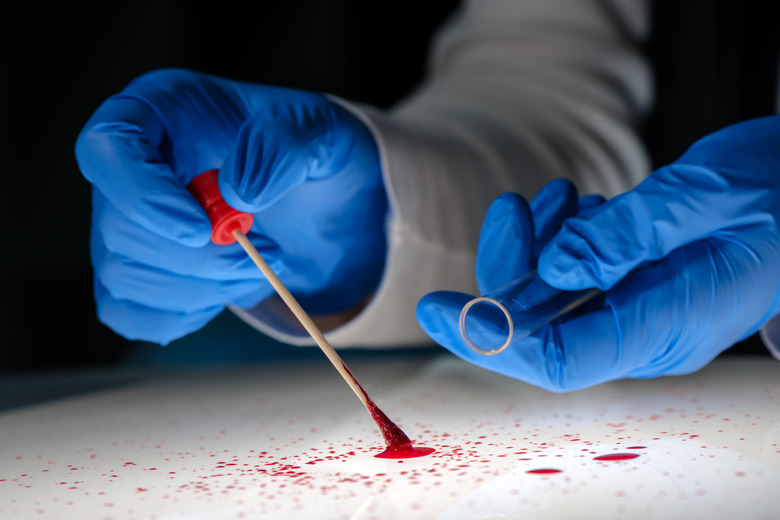What Are Some Advantages And Disadvantages Of Using DNA Analysis To Aid Law Enforcement In Crime?
In little more than two decades, DNA profiling has become one of the most valuable tools in forensic science. By comparing highly variable regions of the genome in DNA from a sample with DNA from a crime scene, detectives can help prove the culprit's guilt–or establish innocence. Despite its utility in law enforcement, however, some applications of DNA have proven controversial.
Advantages
Advantages
The great advantage of DNA profiling lies in its specificity. Even relatively minute quantities of DNA at a crime scene can yield sufficient material for analysis. Forensic scientists typically compare at least 13 markers from the DNA in two samples. In a test with 13 markers, the probability that any two individuals would have identical profiles is estimated to be below 1 in 10 billion. Consequently, when specimens are collected properly and the procedure is performed correctly, DNA profiling is an extremely accurate way to compare a suspect's DNA with crime scene specimens.
Disadvantages
Disadvantages
DNA evidence is only one of many types of evidence jurors should take into account when considering a case. TV shows like "CSI" may have popularized forensic science to the point where some jurors have unrealistic expectations of DNA analysis and accord it more weight than other types of evidence. This phenomenon is sometimes called the "CSI effect." Maintaining DNA databanks can help police identify criminals, but it can also pose ethical quandaries when authorities keep samples from people who have never been accused of any crime. DNA dragnets, operations where police collect samples from a large number of people in a geographic region to find a culprit, have proven especially controversial.
Considerations
Considerations
It's important to remember that DNA analysis, like any other technique in forensic science, is susceptible to human error. Contamination during specimen collection or analysis can dramatically decrease its accuracy and reliability. As a general rule, DNA evidence is more useful in excluding suspects than in proving guilt. The Innocence Project at the New York Benjamin N. Cardozo School of Law has successfully established the innocence of more than 100 wrongfully convicted inmates through DNA profiling and other types of evidence.
Cite This Article
MLA
Brennan, John. "What Are Some Advantages And Disadvantages Of Using DNA Analysis To Aid Law Enforcement In Crime?" sciencing.com, https://www.sciencing.com/advantages-aid-law-enforcement-crime-6776368/. 13 March 2018.
APA
Brennan, John. (2018, March 13). What Are Some Advantages And Disadvantages Of Using DNA Analysis To Aid Law Enforcement In Crime?. sciencing.com. Retrieved from https://www.sciencing.com/advantages-aid-law-enforcement-crime-6776368/
Chicago
Brennan, John. What Are Some Advantages And Disadvantages Of Using DNA Analysis To Aid Law Enforcement In Crime? last modified August 30, 2022. https://www.sciencing.com/advantages-aid-law-enforcement-crime-6776368/
